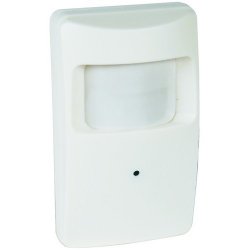 If you’re looking for no-hassle security alarms that are easy to install and operate, try using wire free security alarm systems. These security alarm systems detect and notify just like their “wired” counterparts, however the sensors used in these systems do not require a communication wire installed from each sensor to the control panel.
If you’re looking for no-hassle security alarms that are easy to install and operate, try using wire free security alarm systems. These security alarm systems detect and notify just like their “wired” counterparts, however the sensors used in these systems do not require a communication wire installed from each sensor to the control panel.
While some security alarm companies insist on professional installation of a wire free security alarm system, they are easy enough to install to be a do-it-yourself project. After all, that’s their biggest advantage. Wire free security alarm systems provide a nice, neat installation, with no need to drill holes in the wall, cut up carpet, or other similar installation headaches.
Other advantages to wire free security alarm systems include the ability to easily add, remove, or relocate alarm sensors. In addition, many systems are designed to include the operation of garage doors, remote appliances, and controlled lighting. Further, wire free security alarm systems’ sensors are versatile; they can be placed just about anywhere and are relatively free from the restrictions that prevent wired sensors from being mounted.
Wire free security alarm systems work just like their “wired” counter parts. That is, sensors are placed around the home or business in key areas or points (also referred to as zones) to detect a variety of actions, changes, or other data. Unusual situations (such as pool temperature or amount of rain water) can be detected by using custom made sensors.
The key behind the versatility in a wire free security alarm system lies with the fact that the sensor can be designed to detect just about anything and the information is sent wirelessly. A standard ‘wired” sensor works by either completing or breaking a circuit loop between the sensor and the master control unit. More complex systems have sensors that do more than just “switching” or “relaying” the circuit; they may also send important data (such as room temperature).
A wire free security alarm system sensor uses the same methods for detection, but instead of being connected to the control panel by a wire, it sends the information to the control panel via radio waves. For this reason, “wired master control panels” usually are not compatible with wire free sensors because the panels lack the radio receiver technology needed to acquire sensors’ signals.
Wire free sensors usually contain their own transmitter and antenna as well as the circuitry to convert the data or signal into a radio signal. The sensor also operates from on-board power in the form of a battery or rechargeable battery (some Lithium ion batteries that can be used in sensors can last up to two years without the need for replacing or charging).
Eliminating the need to drill holes through walls and other structures to run wires is just another benefit of a wire free sensor. In addition, many of these sensors can be installed without drilling a single hole as strong adhesive pads can be used to mount the sensor in place.
Wire Free Security Alarm Systems can also work in power failure conditions if the master control panel has a back-up battery. Most panels have NiMH (Nickel Meal Halide) back-upbatteries that are rechargeable and can furnish continuous power to an alarm system for 12 hours or more. Since the sensors contain their own batteries, no additional power supplies are required in the event of a power outage.
There are two factors regarding a do-it-yourself installation of a wire free alarm system that may be difficult for the amateur installer. First, professional installers have the knowledge and experience of performing numerous installations to be able to determine detection points (areas, regions, or zones). The do-it-your-selfer should be able to determine these areas, but careful study of the entire area to be secured, as well as the proper sensors needed are required. Too many sensors are wasteful and cumbersome to the system, too few could live unprotected areas.
The second factor that could present itself as a challenge is programming the master control panel. Once all of the sensors are installed they need to be linked with the master control panel and the alarm and alert notifications need to be programmed, as well as users and any other automatic settings.
However, these two challenges are also shared by “wired” alarm systems, so in general, installing a wire free security alarm system is no more complicated, in fact it is less so, than install a wired security alarm system.
